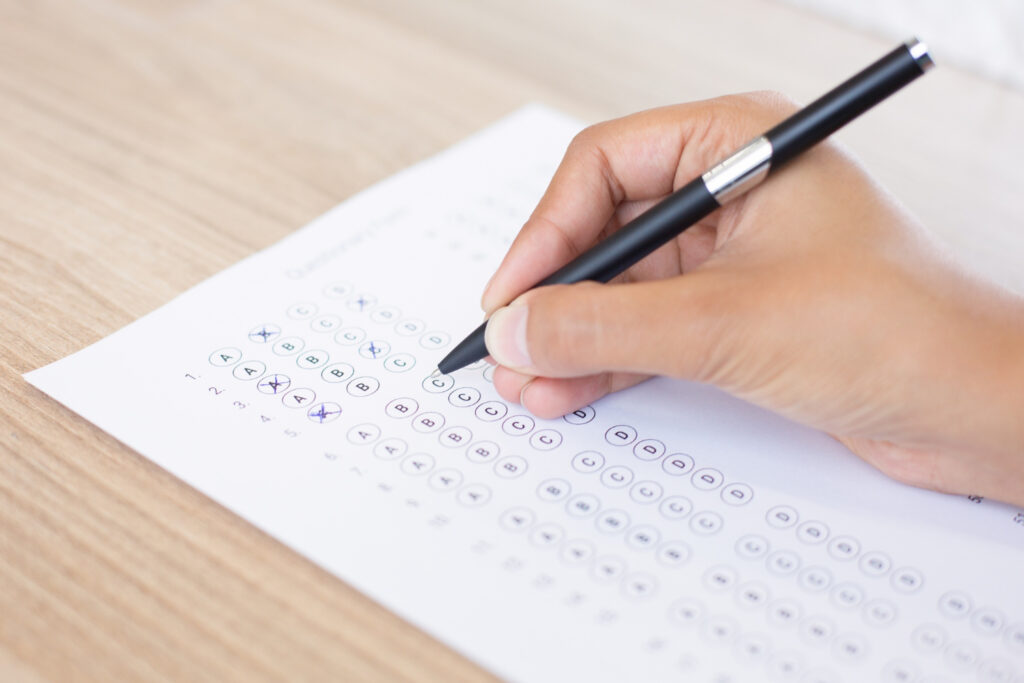SAT might not be the most difficult to crack exam in the world, but it is certainly tricky. The questions are designed to leave you scratching your head without proper SAT preparation and the right coaching. It takes multiple rounds of solving SAT practice test papers and learning the proper techniques and strategies to ace this test.
The reading section can be incredibly daunting as it requires students to focus entirely on the often dull passages. Moreover, the trickiest part is that often all the options seem correct even though there can be only one right answer.
But, no exam is impossible to crack when you get your technique right. Thus, here are some excellent SAT reading techniques that will help you boost your scores!
1. Familiarise yourself with the type of SAT reading passages

A typical SAT syllabus has four different types of reading passages – literary narrative, historical document, social science, and natural science. The literary narrative passages are snippets taken from novels or stories. As the name implies, the historical document passages are historical source documents given in the form of speeches, letters, or editorials. Social science passages contain a scientific study of human society and social relationships. At last, natural science passages include general science topics related to chemistry, physics, or biology.
Despite four types of passages, you will get a total of five passages in the exam. There will be either one social science passage and two natural science passages, or vice versa, while the others will be present singly.
2. DON’T waste your time reading each line

You can’t waste your precious time reading the passages minutely. Thankfully, SAT reading questions often revolve around the main idea behind the passage or the author’s tone instead of specific lines. Very few questions focus on minute details. Moreover, unlike other sections, the questions aren’t in order of their difficulty, so you might miss the easier ones below. Thus, reading line by line would be all in vain.
Here, the best SAT reading technique would be skimming through the passage. Not only does it give you a general understanding, but it also saves you a lot of time. The best thumb rule is to read a passage within three minutes thoroughly, and you are good to go!
3. Summarise
Another excellent SAT exam technique is to summarise each paragraph in the margin. How short? Ideally, a five-word summary would work wonders here. You don’t even need to use words, as long as you understand what you wrote! Embracing this habit will help you internalise and retain your summaries, often to the point that you don’t need to revisit them while answering questions.
A good summarising tip here is to focus on the main idea, logical or narrative structure, and keywords. As you master this art, you should be able to answer all of the broader questions attached to the passage from just your summaries.
4. Know the wrong answer traps
Like every MCQ exam, the SAT exam also has options so that all of them seem correct! These are called wrong answer traps. Here are the most common traps you’ll see in an SAT reading exam:
- Too extreme — It means overwhelmingly positive/negative opinion.
- Assumption — It could very well be true, but not necessarily. Check the passage twice.
- Half right, half wrong — Is correct about one detail or passage but incorrect about the other.
- One word off — Is almost correct, but one word in it is a red flag!
- Wrong detail — Describing something mentioned in the passage in an unclear/wrong way
- Too broad – The answer choice would be technically correct but doesn’t catch the exact essence of the passage.
5. Make checkpoints
In the SAT reading section, you have to answer 52 questions within 65 minutes. Instead of paying attention to the clock the whole time, you can use time checkpoints to help yourself stay on track.
Since the questions are divided almost evenly amongst the five passages, create uniform checkpoints, giving 13 minutes for each passage.
For example:
- Passage 1 – 52:00 (Time left on the clock)
- Passage 2 – 39:00
- Passage 3 – 26:00
- Passage 4 – 13:00
And so on…
Therefore, SAT preparation is a combination of smart work, strategy, and practice. Start your SAT preparation today by keeping these techniques in mind to help you ace your test! Visit the Vocabulary Tablet website for some extra guidance with vocabulary.
About the Author
Neha has been teaching English for about 10 years. She has trained and mentored students of different age groups for spoken English, IELTS, campus recruitment, competitive exams like SSC, IBPS and CAT, group discussions, and interviews. Currently, she is working as a freelancer, training Indian American students for SAT, mentoring Indian students for IELTS and placements. She is passionate about teaching, blogging, and editing videos. She has published 2 e-books “A Word A Day” and “Grammar Notes by Neha” which are available on Amazon. Her special skills include English grammar, proofreading, copy-editing, communication skills, and counseling. In her free time, she loves honing her skills, learning more courses, and spending time with her family. Her life purpose is to MAKE A DIFFERENCE.
Latest blogs in SAT
- SAT Preparation Tips and Resources
 The SAT exam is used by most colleges and universities in the US to make admission decisions. This isa multiple-choice, pen and paper examination. The primary purpose of SAT is to measure the highschool student’s … Read more
The SAT exam is used by most colleges and universities in the US to make admission decisions. This isa multiple-choice, pen and paper examination. The primary purpose of SAT is to measure the highschool student’s … Read more - SAT Reading Techniques
 SAT might not be the most difficult to crack exam in the world, but it is certainly tricky. The questions are designed to leave you scratching your head without proper SAT preparation and the right … Read more
SAT might not be the most difficult to crack exam in the world, but it is certainly tricky. The questions are designed to leave you scratching your head without proper SAT preparation and the right … Read more - SAT One Month Preparation Strategy
 The SAT exam is conducted in the U.S. 5 times a year. It is a mandatory exam to get admission to colleges for undergraduate courses in 90% of the colleges in the U.S. This test … Read more
The SAT exam is conducted in the U.S. 5 times a year. It is a mandatory exam to get admission to colleges for undergraduate courses in 90% of the colleges in the U.S. This test … Read more - SAT High Frequency Words
 Are you preparing for your SAT exam and are looking for the best study material and guidance for SAT preparation? Almost all the colleges in the U.S. need their students to clear the SAT, or … Read more
Are you preparing for your SAT exam and are looking for the best study material and guidance for SAT preparation? Almost all the colleges in the U.S. need their students to clear the SAT, or … Read more
